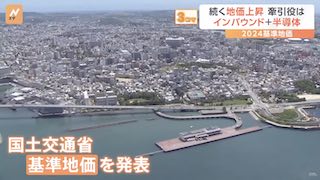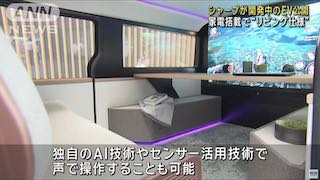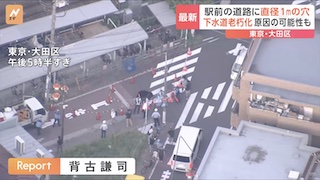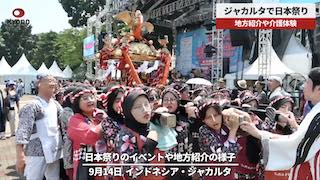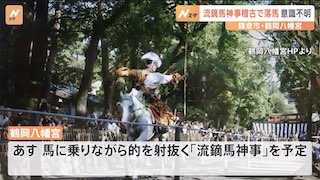Nov 27 (newsonjapan.com) - Pain management clinics have long been at the forefront of novel treatment procedures in New York City, providing relief and hope to many patients suffering from chronic pain.
Today, these clinics are starting on a daring voyage of international expansion, with Japan as a major target for their innovative techniques and cutting-edge therapy modalities. This development has the potential not just to transform the Japanese healthcare market, but also to have a substantial impact on the global pain treatment environment.
The State of Pain Management in NYC
The pain management clinics in New York City are well known for their cutting-edge procedures and holistic approach to pain relief. These clinics have changed pain management standards by offering treatments ranging from basic physical therapy and acupuncture to sophisticated therapies such as Platelet-Rich Plasma (PRP) therapy and Electromagnetic Transduction Therapy (EMTT). The city's pain management doctors are highly trained experts, with many receiving international praise for their clinical skills and creative pain medicine research.
Understanding the Japanese Healthcare System
Japan, with its advanced healthcare system and growing aging population, represents a distinct and fertile market for New York's pain treatment products. The country's healthcare system is dealing with the challenges of an aging population, which has led to an increase in the prevalence of chronic pain illnesses such as arthritis, neuropathy, and musculoskeletal disorders. However, Japan's existing pain management practices, which rely primarily on medication and are less focused on sophisticated non-invasive therapies, have substantial space for improvement.
Bridging the Gap: Advanced Pain Management in Japan
The introduction of modern pain treatment procedures from New York into the Japanese market is expected to close this gap. For example, in Japan, therapies such as EMTT and PRP, which have demonstrated exceptional outcomes in treating numerous pain disorders without the need for surgery or long-term medication, are still relatively new concepts. These therapies represent a possible alternative for the elderly, who are frequently at a higher risk of problems from invasive operations and long-term drug use.
Cultural Awareness and Adaptation
The necessity for cultural awareness and adaptability is a critical part of a worldwide venture. New York's pain management clinics are ready to negotiate Japanese society's cultural intricacies, emphasizing the necessity of polite communication and patient-centered care that adheres to local conventions and expectations. Clinical and administrative training programs are being established to guarantee a smooth transition into the Japanese healthcare system.
This growth is not simply a one-way path; it also opens the door to joint research and knowledge exchange between medical specialists in New York and Japan. This collaboration can result in the development of novel pain treatment protocols and technology, which will help to advance the area on a global scale. Joint clinical trials and research projects are already in the works, with the goal of combining the best of both worlds' pain treatment knowledge.
Impacts on the Economy and Healthcare
The expansion of New York City's pain clinics into Japan is expected to have a huge economic and healthcare impact. It will not only offer new career opportunities, but it will also help to improve pain management standards in Japan. Patients will have more therapy options available to them, resulting in better health outcomes and a higher quality of life.
Patient education is a critical component of this expansion. Clinics in New York intend to conduct educational efforts to educate Japanese patients about the benefits of modern pain management methods. Giving patients information about their diseases and treatment options is a critical step in ensuring the success of this international venture.
The Way Forward
As the premier pain management clinics in New York set their sights on Japan, they bring with them the promise of innovation, hope, and better patient outcomes. This growth is more than a business initiative; it is a commitment to change people's lives by providing innovative pain relief options. The global medical community will be watching the impact of this cross-cultural adventure intently, as it sets the path for future international collaborations in healthcare.
As we watch this extraordinary global spread, it is critical to acknowledge the work of local pioneers such as the BayWayPain clinic in Brooklyn, New York, which has played an important part in creating the pain management landscape. BayWayPain is a testament to the efficacy of modern pain management approaches, providing a complete range of services to meet patients' different demands. BayWayPain has been a cornerstone in the community, giving relief and enhancing the quality of life for countless individuals, emphasizing non-invasive and drug-free treatments.
BayWayPain: A Global Expansion Model
The BayWayPain clinic's approach to pain care reflects the type of cutting-edge procedures that the New York clinics hope to bring to Japan. BayWayPain has been in the forefront of employing cutting-edge technology to address chronic pain, specializing in a variety of therapies such as Electromagnetic Transduction Therapy (EMTT), Platelet-Rich Plasma (PRP) therapy, and advanced cervical traction techniques such as Cervi-Trac. The clinic's emphasis on personalized care, along with its use of cutting-edge pain relief technology, makes it a model worth replicating on a global scale.
What distinguishes BayWayPain is not only its modern treatment procedures but also its dedication to compassionate, patient-centered care. The clinic recognizes that effective pain management entails more than just physical therapies and also includes emotional and psychological assistance. This holistic approach is critical in the treatment of chronic pain, especially in a fast-paced city like New York. The New York pain management clinics seek to bring this combination of scientific expertise and compassionate treatment to the Japanese healthcare environment.
Furthermore, BayWayPain's dedication to patient education and community outreach serves as a model for the company's planned growth in Japan. BayWayPain allows patients to take an active role in their pain management journey by informing them about their illnesses and available treatment alternatives. This teaching program is an important aspect of the clinic's concept and will play a vital role in the development of New York clinics in Japan.
Creating a Global Pain Management Excellence Network
The expansion into Japan is about more than just exporting innovative pain treatment procedures from New York; it's about developing a global network of excellence in this profession. Clinics such as BayWayPain act as critical nodes in this network, exchanging knowledge, expertise, and best practices. This collaborative ecosystem has the potential to improve the quality of pain management services worldwide, benefiting patients from various cultures and healthcare systems.
The entry of New York's pain management clinics, such as BayWayPain in Brooklyn, NYC, into the Japanese market, is a trailblazing move toward globalizing modern pain reduction options. This enterprise has the potential to significantly alter how chronic pain is addressed across cultures, setting the way for a future in which pain care is more accessible, effective, and patient-centered. As these clinics expand into new areas, they bring with them the promise of a world in which pain is properly treated via the greatest of medical innovation and compassionate care.




